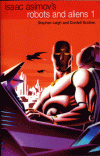
“HeirToTheEmpire” by Source. Licensed under Fair use via Wikipedia.
When I heard about production of Star Wars Episode VII and the ensuing controversy about the Expanded Universe vs canon, I started thinking about reading Timothy Zahn’s Thrawn Trilogy again. I first read the books almost 25 years ago! I decided that I didn’t really care if the new movies conflicted with the books. I remembered being blown away, so figured they were worth reading again. These books were a very important to me at the time because it was my first real taste of Star Wars outside of the theatrical films. There were other books released before this, but the Thrawn Trilogy marked the resurgence of my interest in Star Wars.
I’ll admit that I’ve been a bad reviewer and powered through the series without stopping to write my reviews. I normally read on my lunch breaks at work and have not had hardly any time outside of work and family life to devote to reviews as I did just a few years ago.
After reading just a few chapters of Heir to the Empire, I realized that there was quite a bit that I didn’t remember, including a rather large plot line that ran through the last two books (Dark Force Rising and The Last Command). Toward the end of The Last Command, I came across a huge plot twist that I had absolutely no memory of until just before it was revealed. I’m simply amazed at how much of this series I couldn’t remember. In a way, it was a blessing because I almost experienced the book for the first time again. This was kind of weird for me as I always thought I had an excellent memory when it came to books. I gave my wife a hard time about not remembering some fairly important stuff in the Wheel of Time series, despite her reading it at least 3 times through from beginning to end as new books came out. At the time I had only read the series once through. (more…)



The book left me thinking more about philosophy that the actual story. I suppose that is a good thing. In Asimov’s forward, he brings up the biblical story of the Good Samaritan. In this story, Jesus answers the question, “Who is my neighbor?” The moral of the story is that love and mercy should extend to all people (humans). History in our century shows that we as a society do not treat each other as neighbors. In this fictional future, this does not change much. The central theme of this book is three robots attempting to answer the question, “What is human?” so that the robots would know who they should serve and protect. Further, the programming that only biological humans are important enough to protect is questioned. Wolruf, a wolf-like alien, and the sentient bird-like aliens are included in the programming as ‘human’ so the robots would protect them. The robots had a hard time believing that under the definition that humans are the highest form of being that Derec, Ariel, and Avery were human. I really enjoyed the development of the Robots’ search for the truth.
The line that I will remember most is the answer a philosopher robot gives to the question, “What is a human?” It answers, “That depends on your point of view.” Our society can definitely relate to this…since some groups categorize other groups as sub-human based on race, gender, accent, and dare I say immigrations status.
I am beginning to question why, in this story, robots are only directed to protect humans and not all life…
The Three Laws of Robotics were developed initially to safeguard humans against robots. If I remember correctly, programmers also wanted to ensure that robots were loyal to the humans in case they encountered aliens. In Asimov’s “Robot and Foundation Universe” humans mainly worried about protecting themselves, not respecting all forms of life. They thought that humans were at the top of the food chain and should stay that way.
The Robot City/Aliens books was the first time Asimov allowed other authors to write using the Three Laws of Robotics. He challenged them to approach his work from a fresh angle. It’s been a while since I’ve read these, but from what I remember, these new authors did a pretty good job.